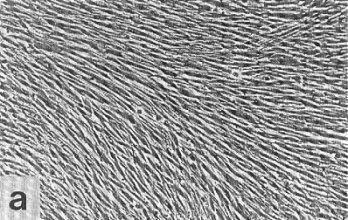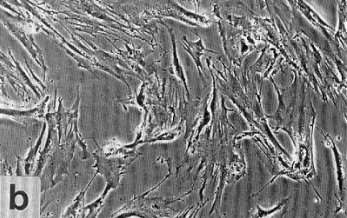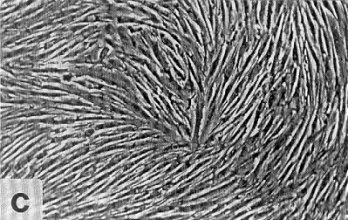L-Carnosine for Anti Aging
Carnosine is made up of a combination of the two amino acids Beta-Alanine and L-Histidine and is known scientifically as N-beta-alanyl-histidine.
When taken as a natural health supplement Carnosine protects and extends the functional life of the body’s key building blocks – cells, proteins, DNA and lipids.
Long-lived cells such as nerve cells, called neurons, and muscle cells, called myocytes, naturally contain high levels of L-Carnosine and these muscle levels of L-Carnosine correlate exactly with maximum life spans.
L-Carnosine is 100% safe and 100% hypo-allergenic – it is naturally occurring in many foods and in the body itself.
Studies on the Rejuvenating Effects of L-Carnosine have shown:
- Anti-Carbonylation: Carbonylation is a pathological step in the age-related degradation of the body’s proteins and Carnosine is the most effective anti-carbonylation agent yet discovered.
- Antioxidant: Carnosine effectively quenches the most destructive of free radicals, the hydroxyl radical, as well as super oxide, singlet oxygen, and the peroxyl radical.
- Cell Rejuvenation: Carnosine has the remarkable ability to actually rejuvenate cells approaching senescence (the end of the life cycle of dividing cells), restoring normal appearance and extending their cellular lifespan.
- Wound Healing: Carnosine has the amazing ability to rejuvenate connective tissue cells and thus to expedite wound healing.
- Brain Protection: Carnosine protects the microvas culature of the brain from plaque formation that may lead to senility and Alzheimer’s disease.
- Improved Calcium Response: Carnosine enables the heart muscle to contract more efficiently through enhancement of calcium response in heart myocytes.
- Cellular DNA Protection: Carnosine protects cellular DNA from oxidative damage that accumulates with age.
- Skin Protection: Carnosine helps prevent skin collagen cross-linking which leads to loss of elasticity, wrinkles, macro-molecular disorganisation, and loss of extra cellular matrix.
L-Carnosine Rejuvenates Cells
Cultures of senescent cells cannot be mistaken for younger cells, which are uniform in appearance and line up in parallel arrays. By contrast, senescent cells exhibit a grainy appearance and take on odd shapes and sizes. They lose the ability to organise themselves in a regular pattern. These striking changes are called the senescent phenotype.
A dipeptide (chemical union of two amino acids) called L-Carnosine has been shown to rejuvenate cells displaying the senescent phenotype, quickly restoring the juvenile phenotype (McFarland GA et al., 1999; McFarland GA et al., 1994).
Below are three photographs of human cells grown in culture.

Healthy Young Cells

Senescent (old) Cells

Senescent (old) Cells supplemented with L-Carnosine
Clinical Study – The Effects of L-Carnosine on Cultured Human Cells.
It started with the work in Australia. They wanted to see the effects of L-Carnosine on cultured human cells.
What they did know were the results of decades of research on human cells and the well-defined pattern in the growth, development and ageing of them, referred to as the “Hayflick Phenomenon”.
Placed in a growth vat with a fluid (medium) rich in essential nutrients, cells from young donors will quickly begin to reproduce, forming colonies, which fill the vat – and then stop reproducing, to prevent starving themselves out. If half of these cells are removed from the container, the remaining cells will begin growing again to fill their environment. But this process only goes on so far. At each round of division, the cells are ageing or becoming “senescent”. The changes are subtle but as time goes on it becomes more and more obvious that something is very wrong with the cells.
They lose their shape and begin to vary wildly in size, then fill up with granular material, they stop forming continuous colonies, losing their even, patterned, regular spacing and begin breaking apart, with individual cells drifting off on their own.
Senescent cells stop producing the right proteins from their DNA, losing the functions for which they were designed…the same process which happens in skin aging and wrinkling. On the whole, the appearance of the cell culture assumes an unhealthy looking texture. Finally, after about 60 divisions, the cells will stop reproducing and slide into a sort of twilight zone, alive but inactive…simply waiting for death.
These are the known or given facts of the studies. Now here is what happened. They raised lung and skin cells in one of two standard cell culture mediums. Then they kept half of the cells in the original medium, and transferred half to the same medium supplemented with L-Carnosine.
The results were clear, simple and astonishing! The cells in L-Carnosine not only had from 1 to 7 more population doublings, the cells themselves lived up to two thirds longer than the standard medium cells! L-Carnosine treated cells had broken the Hayflick limit and left it in the dust!
In the whole person it would be like taking someone like Jean Calmet who lived until 122 being the standard and having her sister in the L-Carnosine group, surviving until 200 years old!
This is great…but the best news is that adding L-Carnosine to the cell medium made the cells younger! Scientists described the results as “striking effects on the cell morphology” (shape and structure). The cells raised in L-Carnosine-supplemented medium looked the same as they did when they were young even over time, yet the ones raised in the regular medium got old, blotchy , irregular and broke apart into scattered islands of twisted debris.
It gets better…to take things one step further, the scientists took the old, pooped-out cells from the standard medium and put them into the L-Carnosine supplemented medium, and they reversed this process by taking the L-Carnosine supplemented cells and putting them in ordinary medium. Well, the first part is not too hard to understand, the once L-Carnosine-supplemented cells rapidly degenerated into what would be their normal state, but the neatest part is that the “old” cells from the normal medium were definitely made younger again by the L-Carnosine bath!
The researchers are quoted “These cells showed a remarkable rejuvenation, with regard to their morphology…..and finally reached ages significantly greater than the control culture from which they were derived.”
Scientific establishments have subsequently repeated, confirmed and expanded on the original results. They proceeded to show that they could take regular cells, watch them age, put them in the L-Carnosine bath, watch them grow younger and switch them back and watch them age again.
They propose that L-Carnosine is integral to cellular organisation and function, therefore optimising longevity.
When L-Carnosine was taken from the petri-dish to the lab and studied on animals, the following findings were observed:
1) L-Carnosine enhanced the memory functions of the brain cells and also stopped the over stimulation of certain receptors…which in situations such as stroke can inhibit oxygen to the brain cells leading to cellular death.
2) It inhibits the activity of MAO B (monoamine oxidase B) which is an enzyme involved in breaking down some brain messengers (such as dopamine and serotonin). MAO B activity is known to increase production of the free radical precursors hydrogen peroxide, and the enzyme becomes more active as a person gets older. Deprenyl, a drug used to treat people with Parkinson’s disease, works by inhibiting MAO B.
3) Senile cataracts in 96 seniors, who had them for 2-21 years improved greatly by using L-Carnosine eye drops 3-4 times per day. Positive results were seen in over 80% of the cases. L-Carnosine was also seen to improve general eyesight. Corneal ulcerations and erosion from viral and bacterial sources also improved greatly.
4) In the first tests, it was noticed that one of the batches of normal medium cells had become contaminated with cancer cells. It was growing rapidly. When L-Carnosine was added to this dying population, the cell cultures became free of cancer cells! They tried it against seven different human cancers and every one showed the same result. It seems that as beneficial as L-Carnosine is to normal cells…it was selectively toxic to human cancer cells!
5) L-Carnosine is a highly versatile antioxidant capable of neutralising a large range of free radicals (superoxide, singlet oxygen, hydrogen peroxide and both peroxyl and hydroxyl radicals). Further, it has indirect antioxidant powers through chelation of pro-oxidant metals and the prevention of the destruction of the antioxidant enzyme superoxide dismutase. These qualities give it a place in mercury and other heavy metal detoxification.
6) L-Carnosine protected cellular DNA better than any other antioxidant (Vit E, Vit C, NAC etc) under the stress of toxic levels of oxygen. In fact it was the only substance which did.
7) L-Carnosine also protects against the formation of Advanced Glycation Endproducts (AGE’s), proteins warped by sugar (glycated). When a protein becomes glycated, it results in the loss of that protein’s function, loss of flexibility, atherosclerosis, abnormal cellular signalling, inflammation, the complications of diabetes, and aspects of the aging process.
8) As people age, their rate of tearing down old, defective cellular proteins (proteolysis) slows down, which interferes with cellular function. L-Carnosine maintains proteolysis at more youthful levels in old cells. It also reacts with abnormal proteins, making it easier for the body to rid itself of them.
9) In some cases, L-Carnosine changes gene expression in cells exposed to it, including increasing the expression of vimentin, a protein involved in maintaining the integrity and complex internal structure of the cell.
10) L-Carnosine enhances various aspects of immunity and protects cells against damage from a variety of toxins produced in the body as a part of normal metabolism such as the lipid peroxidation product malondialdehyde; the cancer-causing glycation product methylglyoxal; hypochlorite, a deadly substance made by cells of the immune system to kill off invading pathogens, but also toxic to the body’s own cells; formaldehyde’ and the amyloid beta-peptide, which forms the seed of the plaques associated with Alzheimer’s. L-Carnosine also prevents the development of amyloid into full-fledged plaques.
Aging, Proteotoxicity, Mitochondria, Glycation, NAD+ and Carnosine: Possible Inter-Relationships and Resolution of the Oxygen Paradox
Carnosine for Anti Aging: https://www.ncbi.nlm.nih.gov/pmc/articles/PMC2874395/
PubMed
PubMed Central® (PMC) is a free full-text archive of biomedical and life sciences journal literature at the U.S. National Institutes of Health’s National Library of Medicine (NIH/NLM).
Carnosine Clinical Studies and Research Papers
Carnosine for Alzheimer’s Disease:
https://www.ncbi.nlm.nih.gov/pubmed/21423579
Carnosine for Cataracts and Glaucoma:
https://www.ncbi.nlm.nih.gov/pubmed/21048433
Carnosine The Super-Anti-Oxidant:
https://www.ncbi.nlm.nih.gov/pubmed/9765790
Carnosine and Anti Aging:
Carnosine and Cancer:
https://www.ncbi.nlm.nih.gov/pubmed/24292217
Carnosine for Cardiovascular Disease:
https://www.ncbi.nlm.nih.gov/pubmed/31296155
Carnosine for Diabetes:
https://www.ncbi.nlm.nih.gov/pubmed/29420997
